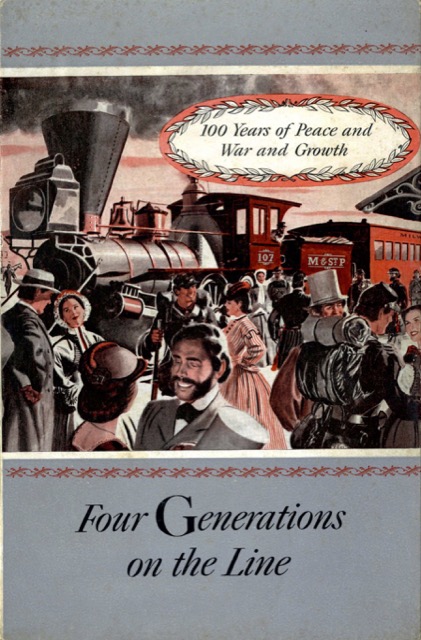The Milwaukee and Mississippi Rail Road–the earliest predecessor of the Milwaukee Roads–operated its first train in 1850. To celebrate the centennial of that event, the Milwaukee issued this hardbound book in 1950. The book presents the history of the road as seen through the eyes of a farmer (1850-1875), a telegraph operator (1875-1900), a merchant (1900-1925), and a railroad employee (1925-1950), all fictitious of course.
 Click image to download a 20.4-MB PDF of this 52-page book.
Click image to download a 20.4-MB PDF of this 52-page book.
In addition to reporting on the growth and history of the railroad, the book also notes other historic events, such as giving women the right to vote in 1920 and the 6.9 Montana earthquake of 1925. It also observes that it was once known as the St. Paul Road and only became known as the Milwaukee Road after 1927.
In 1933, the railroad employee brags that “ours was the only Railroad to exhibit a modern passenger coach, built in our own Milwaukee shops,” at the Century of Progress Exhibition. Of course, Pullman had a some modern cars at the fair, and UP and the Burlington introduced their streamliners in the 1934 continuation of the fair.
The book doesn’t report everything, of course. It notes that the railroad went into receivership in 1860 and came out of receivership in 1945. That’s a long time to be in bankruptcy court! In fact, the road went into and out of bankruptcy several times during that period, but that wouldn’t be something the railroad would want to brag about.
